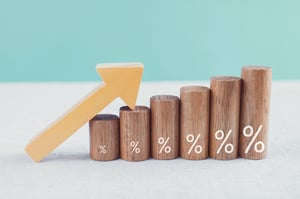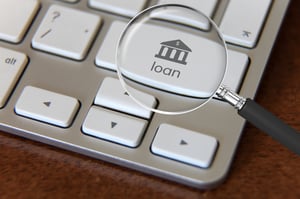Okay, real estate investors ... let’s get one thing straight.
To grow and succeed in this business, you must understand how to analyze assets and potential investment properties. That starts with comprehending one of the most foundational metrics in the real estate world:
Cap rate.
Cap rate.
Cap rate.
Let’s talk about cap rate! Don’t worry - I’ll explain exactly what cap rate is and how to use its formula in practical ways to analyze markets and rental properties.
Definition of Cap Rate
Cap rate, which is short for capitalization rate, is a measurement used to compare various real estate investments or markets. It’s often calculated as the ratio between Net Operating Income (NOI) and a property's original acquisition cost (including upfront repairs and expenses).
Cap Rate = Annual Net Operating Income (NOI) / Purchase price
NOI = Gross Rental Income – Vacancy, Taxes, Insurance, Maintenance, Other expenses
You can use cap rate in various ways, such as
- when analyzing an individual property, or
- to get a better grasp on an entire investment market by taking the average of multiple properties.
A simple way to grasp the concept is to understand its inverse rule: the lower the cap rate, the more expensive the property. The higher the cap rate, the cheaper the property.
Important Notes on Cap Rate
Cap rate DOES NOT include any mortgage expenses. This is beneficial because it gives more of an accurate analysis by not factoring in financing (terms, interest rates, etc.). In other words, it focuses on the property alone without any of the distractions of financing.
One thing I see a lot of new investors confused by is the difference between cap rate and cash-on-cash return. Let me clarify... they are NOT the same. Cap rate can match your cash-on-cash return if you buy a property without any financing, but again ... they are definitely not the same calculation.
Examples of Cap Rate in Use
The cap rate equation is defined by three parts:
- NOI
- Purchase Price
- Cap rate
If you know the purchase price ($1MM) and NOI ($40,000)…you can easily find the Cap rate:
$40,000 (NOI) / $1,000,000 (Purchase Price) = 4% (Cap rate)
The cool thing about understanding the cap rate equation is, if you know 2 of the parts, you can easily find the 3rd. For Example:
If a building sells for $1M at a 4% cap, you then know the NOI is $40,000.
4% (Cap Rate) = X (NOI) / $1,000,000 (Purchase Price)
X = $40,000
--------------
Cap rate is very dependent on the particular market you’re looking in. We all know that property in the San Francisco Bay Area generally costs more than property in the Midwest. That means that $1M can be used to purchase assets that bring in vastly different NOI. For example:
A $1 million building with a 7% Cap, has a $70,000 NOI.
A $1 million building with a 4% Cap, has a $40,000 NOI.
As you can see...same purchase price, but different returns based on location and market.
Cap rate is also affected by surrounding buildings. When looking at two buildings in the same neighborhood, one that was recently updated and one that was not, the updated one might trade at a 5% cap, whereas the one in need of renovations may trade at a 7% cap.
A general rule of thumb when it comes to cap rate? Better neighborhoods trade at lower cap rates and worse neighborhoods trade at higher cap rates. So the next time you spot an “irresistible” 15% cap rate property, you can generally assume it’s not in a great neighborhood.
Lower cap rates mean less risk and higher cap rates are higher risk... so, it’s up to you to decide on the investment type you want.
Can You Change Cap Rates?
The answer is YES! One thing I love about real estate is that you actually have a lot of control in this type of investment. A key strategy in the investing world is to “force appreciation” and that’s usually done through compressing cap rates and increasing NOI.
“Compressing cap rates” is simply buying at a high cap rate (cheaper), and selling at a lower cap rate (more expensive). This is usually achieved by buying a property in need of repair that’s bringing in below market rent. Once you renovate it, you can raise rents, which increases NOI and the value of the property; with a little help from an appreciating market, it’s a win-win.
I’m currently in a deal right now in Phoenix where our business plan calls for this exact strategy. We bought a property that has a lot of room to raise rents after we renovate it. This is because the property was built in 1986 and has not seen many updates through the years.
Here’s where we come in as investors, spruce up the building, and add amenities and value. Once we get rents up we’ll then assess a refinance-and-hold or a sale, depending on market conditions. Once the property is turned around and performing at its full potential, it should command top dollar.
What’s a Good Cap Rate for Investors?
The quick answer is: it depends.
I know, I know ... you wanted more of a concrete answer, but it really depends on your personal investment criteria, preferences, and risk tolerance. There is no clear answer, but here are three factors to evaluate when deciding what a “good” cap rate is:
Risk Tolerance
To further explain, let’s take a look at two investments, one that’s a 6% cap and one that’s an 8% cap.
The 6% cap property may be a good fit for an investor looking for more of a passive and stable investment. It might be in a better location with a better chance of appreciation.
The 8% cap property may be a good fit for an investor that’s willing to take more of a gamble and risk. It might have a better upside as well, but is less stable.
Control
To further answer the question of “What’s a good cap rate?” I want to reiterate that you CAN change cap rates, they will change, and you have some control over them to an extent.
Just because you buy a 6% cap property doesn’t mean it will stay at 6% for the lifetime of the investment. By successfully raising rents on an investment property (which increases NOI), you will literally change the cap rate and increase you ROI.
The Future
An investor’s outlook on the future of a particular market may also help determine if a cap rate is “good” or not. If you are confident that a market is on the upswing and appreciating, there may be a reason and more tolerance to buying a low cap rate property.
I don’t necessarily recommend this strategy as it’s pretty much gambling in every sense. You are essentially betting that the market will appreciate, and you’re hoping the market turns your “OK” investment into a great one.
Analysis Continued
At the beginning of this post I stated: to grow and succeed in the real estate investing business, you must understand how to analyze assets and potential investment properties.
Well, that’s 100% true. In addition to understanding Cap rate, there are a few more key formulas and metrics you should know:
Cash Flow
Cash flow is the amount of cash you have left over each month from a rental property after paying all the operating expenses and setting aside money for any future repairs.
Cash flow = gross rental income - expenses
For buy-and-hold investors, cash flow is the key to increasing passive income. You’re going to need cash flow if your grand plan is to quit your job and live on the beach!
Cash on Cash Return
The cash-on-cash return is a good gauge of how well an investment property will perform. It expresses the ratio of annual cash flow to the amount of actual cash you invested upfront.
Cash-on-cash return = annual cash flow / initial cash out of pocket
Generally, I look for properties that produce at least 7% cash-on-cash return, as you can historically get about 7% by investing in long-term index funds. I want to beat index funds.
IRR
The internal rate of return, or IRR, measures the rate of return earned on an investment during a specific time frame. It includes cash flow and any profits from a property’s sale. Simply put, IRR represents a property’s net cash flow and expected appreciation divided by the target hold time.
While IRR is a helpful way to estimate your asset’s performance over the entire time that you plan to hold it, it’s not the first metric I look at when evaluating real estate because it relies heavily on forecasting years of cash flow and a projected sale price. Since none of us has a crystal ball, forecasting years in advance is difficult to do and not always entirely reliable.
Conclusion
Understanding cap rate and its uses is key to becoming a successful real estate investor. Although the idea of a cap rate may seem very mathematical, it has other very practical uses. Understanding this concept can help you pick a market, a property type, set specific investing criteria, analyze, and decide if or when to hold or sell a property.
In addition to cap rate, there are other baseline formulas and metrics you should familiarize yourself with and put into practice while analyzing investments. Cash flow, cash-on-cash return, and IRR are a few other items you need to understand in the real estate investing world.
As you can comprehend by now, grasping this information is critical in this industry. Now go out, take action, and put this learning to use!












